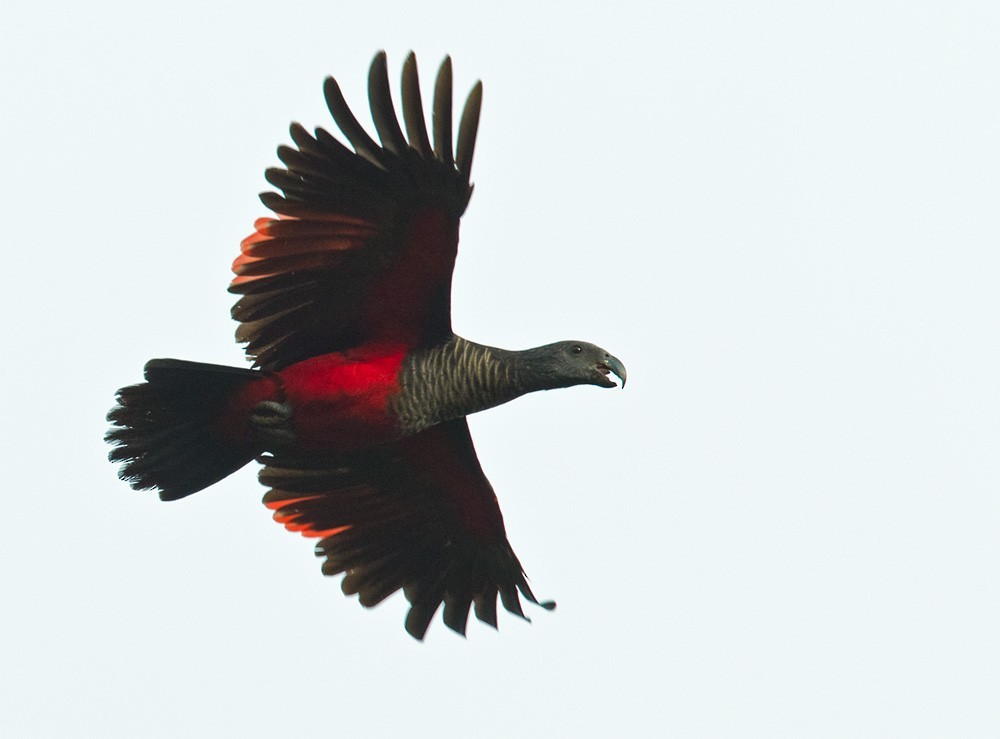Pesquet's Parrot
A species of Pesquet'S Parrot, Also known as Dracula Parrot Scientific name : Psittrichas fulgidus Genus : Pesquet'S Parrot
Pesquet's Parrot, A species of Pesquet'S Parrot
Also known as:
Dracula Parrot
Botanical name: Psittrichas fulgidus
Genus: Pesquet'S Parrot
Content
Description General Info
 Photo By Lars Petersson
Photo By Lars Petersson Description
Pesquet's parrot is a large parrot with a total length of approximately 46 cm (18 in) and a weight of 680–800 g (24–28 oz). Its plumage is black, with greyish scaling to the chest, and a red belly, uppertail coverts and wing-panels. The adult male has a red spot behind the eye, which is not seen in the adult female. Compared to most other parrots it appears unusually small-headed, in part due to the bare black facial skin and the relatively long, hooked bill. This rather vulture-like profile is the reason behind its alternative common name. 
Size
46 cm
Life Expectancy
40 years
Nest Placement
Tree
Feeding Habits
Pesquet's Parrot primarily feasts on fig fruits, especially from Ficus species, while also consuming soft fruits like mangoes and climbing pandans. They occasionally indulge in blossoms, nectar, and Freycinetia flowers. This species has lower protein needs, possibly supplemented by fig wasps, and could be a mutualist, aiding seed dispersal for other birds.
Habitat
Pesquet's Parrot primarily inhabits mature and tall secondary forests located in the foothills and lower mountain regions. These environments are characterized by dense, lush vegetation and a complex forest structure, providing ample food resources and opportunities for nesting. Generally, pesquet's Parrot prefers the rich biodiversity offered by these forested areas, extending their range into adjoining lowland forests when necessary.
Dite type
Frugivorous
General Info
Feeding Habits
Bird food type

Fruit
Behavior
Pesquet's parrot is a highly specialised frugivore, feeding almost exclusively on a few species of figs. Flowers and nectar have also been reported. At least in parts of its range, it is seasonally nomadic in response to the availability of fruits. The bare part of the head is presumably an adaptation to avoid feather-matting from sticky fruits. Little is known about its breeding habits in the wild. Typically it lays two eggs in a nest in a large, hollow tree. It is typically seen in pairs or groups up to 20 individuals. In flight, it alternates between rapid flapping and short glides. 
Species Status
Its feathers are highly prized. This, combined with high prices in aviculture, has resulted in over hunting. Habitat loss also presents an ongoing problem. For these reasons, it is evaluated as Vulnerable on the IUCN Red List of Threatened Species. Pesquet's parrot is listed on Appendix II of CITES. 

 Photo By Lars Petersson
Photo By Lars Petersson Scientific Classification
Phylum
Chordates Class
Birds Order
Parrots Family
Parrots Genus
Pesquet'S Parrot Species
Pesquet's Parrot